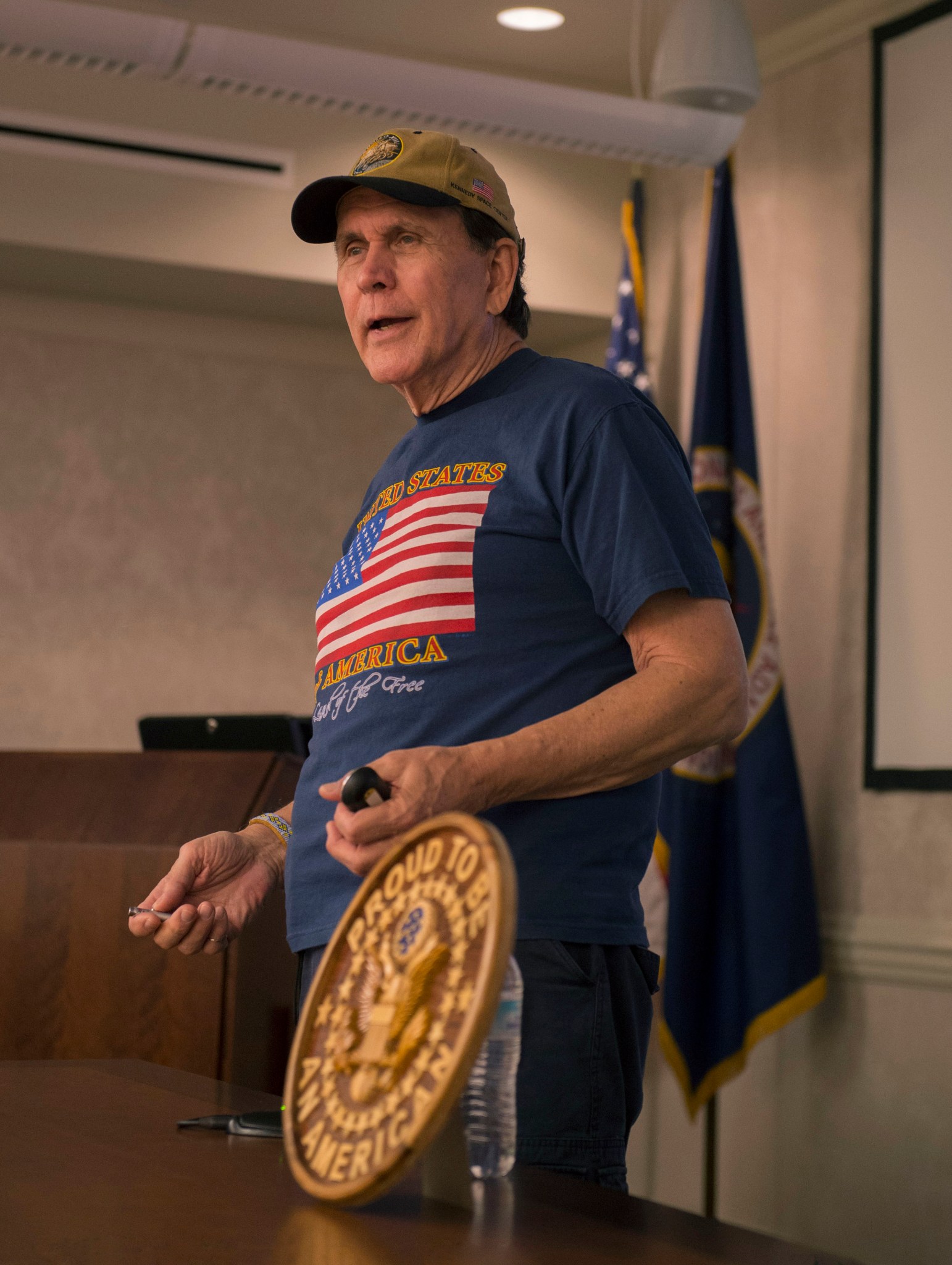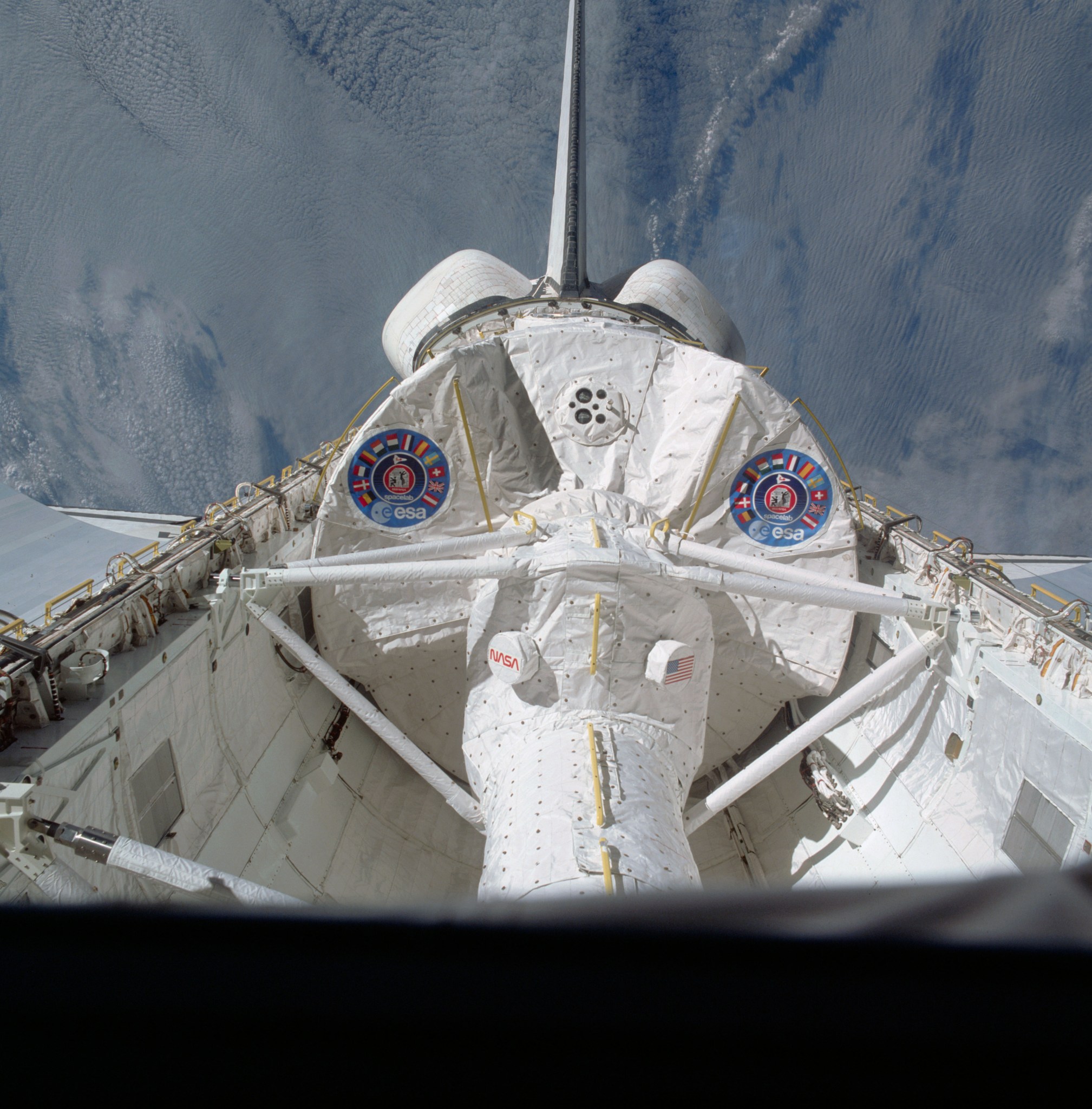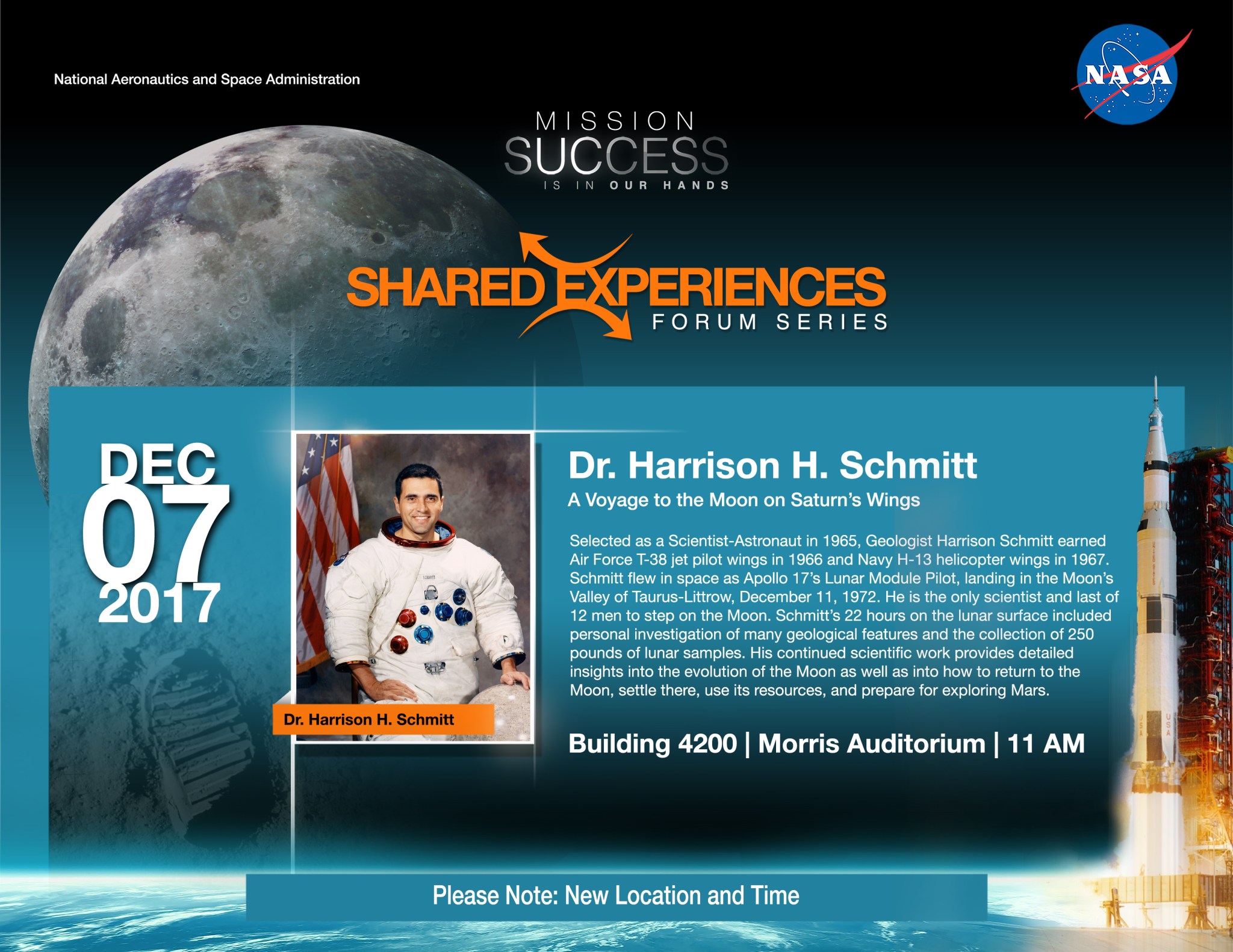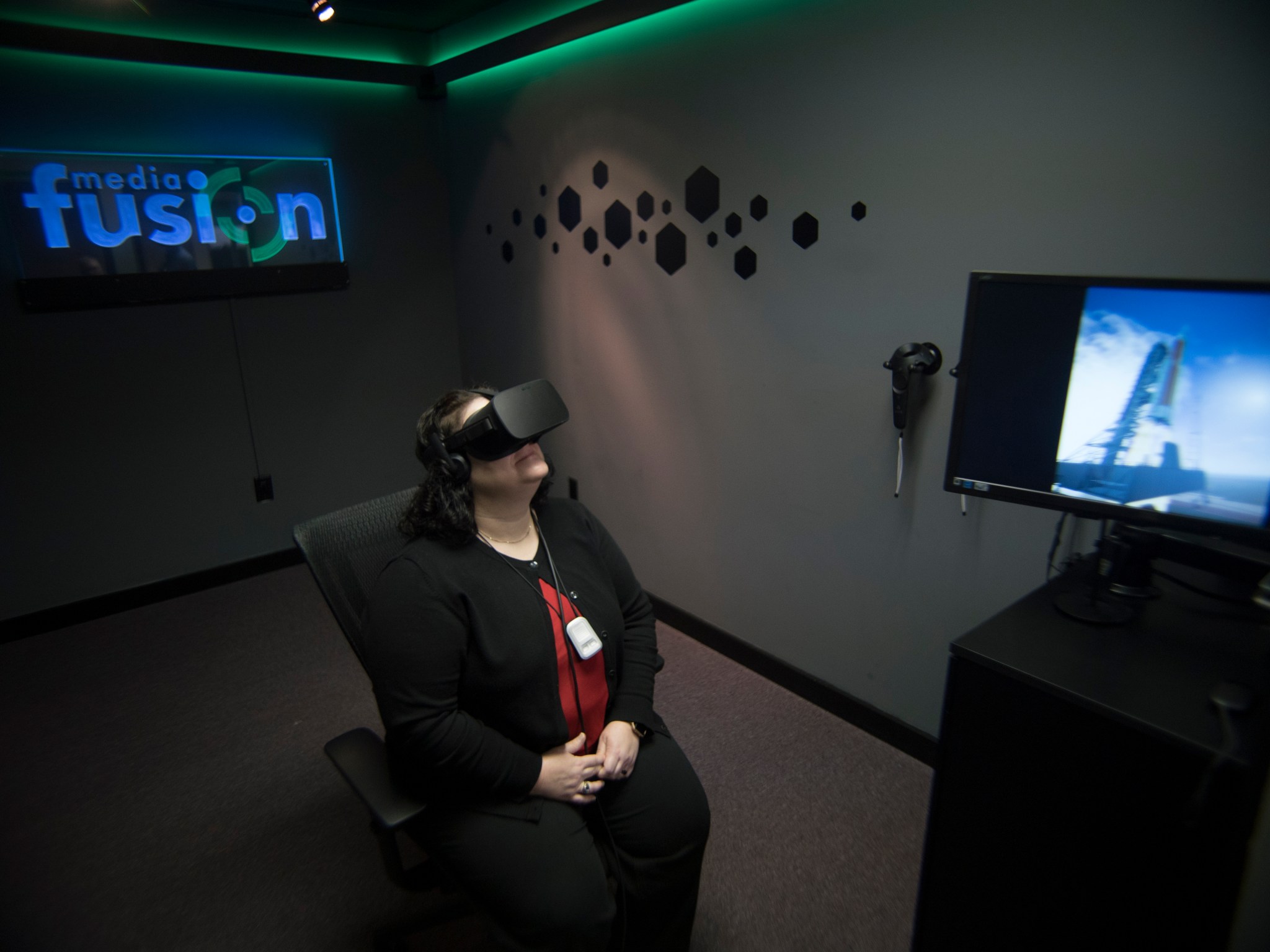In This Week’s Star
- Employees Encouraged to Submit Questions for Interactive Question and Answer Session with Apollo 17 Astronaut Harrison Schmitt on Dec. 7
- Marshall Holiday Tree Lighting Ceremony Nov. 30
- NASA 508 Resource Group Provides Valuable Insight for Software Developers Seeking to Improve Working Conditions for Employees with Disabilities
- Marshall Celebrates Native American History Month
- NASA’s First Public 4K Video Livestream from the International Space Station Receives Hollywood Professional Award
- This Week in NASA History: Spacelab-1 Launches – Nov. 28, 1983
- Obituaries
Employees Encouraged to Submit Questions for Interactive Question and Answer Session with Apollo 17 Astronaut Harrison Schmitt on Dec. 7
NASA Marshall Space Flight team members are invited to a very special Shared Experiences event as Harrison Schmitt — Apollo 17 astronaut and geologist — will take questions from the workforce during the Mission Success is in Our Hands forum Dec. 7, at 11 a.m. in Building 4200’s Morris Auditorium. Employees are encouraged to submit questions for Schmitt prior to the event here.
Schmitt will share his experiences as an Apollo astronaut and lunar geologist. The moderated interactive Q&A session will include questions from the audience, as well.
Selected by NASA as a scientist-astronaut in 1965, Schmitt played a vital role in training his fellow astronauts in field geology during the Apollo program. In 1972, the New Mexico native got his chance to do out-of-this-world field geology when — riding atop a Saturn V rocket developed at Marshall — Schmitt, along with Apollo 17 commander Gene Cernan and command module pilot Ron Evans, left Earth and headed to the Moon. During his 22 hours of lunar extravehicular activity, Schmitt became the first and only geologist to walk and conduct scientific investigations on the Moon, adding greatly to scientific knowledge gained of Earth’s nearest celestial neighbor.
Following his NASA career, Schmitt served as a U.S. senator, representing New Mexico. He remains involved in lunar geology research and is a tireless advocate for the exploration and utilization of the Moon, both to advance science and the economy and to use it as a test site for deep-space exploration.
Part of Marshall’s Mission Success is in Our Hands initiative, the Shared Experiences Forum Series seeks to help team members learn from others’ experiences and to help make meaningful connections between their jobs and the safety and success of NASA missions. The series is sponsored by Marshall’s Safety & Mission Assurance Directorate in partnership with NASA contractor Jacobs.
Marshall Holiday Tree Lighting Ceremony Nov. 30
The Marshall Exchange will host the NASA Marshall Space Flight Center Holiday Tree Lighting Ceremony on Nov. 30 at 4:45 p.m. Family members are welcome to attend, as a visit from a very special guest is expected.
The free event will take place at the front terrace area of Building 4200. Marshall team members are invited to enjoy cookies and hot chocolate as the children from the Marshall Child Development Center sing carols.
NASA 508 Resource Group Provides Valuable Insight for Software Developers Seeking to Improve Working Conditions for Employees with Disabilities
By Jonathan Deal
The sound of NASA’s Space Launch System blasting off from Kennedy Space Center and the breathtaking visual of the rocket bursting through clouds are just a few of the things that make the agency’s recently released SLS EM-1 Launch Animation such an inspirational video. Now, imagine watching a similar animation using virtual reality, a computer technology that uses headsets to simulate a user’s physical presence in an imaginary environment.
Media Fusion, a support services company from Huntsville, is currently working on a virtual reality simulation for the Space Launch System. The “NASA SLS Oculus Rift Experience” will serve as a unique educational tool — a kind of a “personal roadshow” of the SLS.
Before that can become a reality, however, the software had to pass Federal Section 508 Compliance, which ensures that all users, regardless of disability status, can access technology. Kathy Thompson, an employee of SAIC, supporting NASA Marshall Space Flight Center’s Agency Application Office, who has less than 20 percent of vision and has a hearing loss due to a genetic condition called Usher syndrome, recently tested the software to provide 508 Compliance feedback.
“The contractor that built this made an effort to make it compliant, so they were very willing to hear our feedback,” said Michele Farr, Marshall’s Federal Section 508 coordinator. “When reviewing something like this, you have to assume that users know they are using a virtual reality system.”
Thompson and Farr are members of the NASA 508 Resource Group, a small group of dedicated employees from all NASA centers who work together to advocate for an improved NASA work experience for employees with disabilities. They collaborate on 508 work-related issues and share tips and experiences via a telecon twice a month.
“Apparently, the software needed to pass 508 compliance, so Michele (Farr) thought it would be a good idea to test it,” said Thompson. “What better person to check it out than someone who is visually impaired and hard of hearing.”
Members of the 508 Resource Group have been tapped to support some interesting 508 evaluations and continue to provide input on how to make applications, software and web pages more accessible. Their feedback has proved valuable in the application process for the SLS virtual reality experience, for NASA’s civil servant time and attendance software, WebTADS, and for a test app for a mobile platform that would allow “citizen scientists” to provide crop and drought condition information from across the United States.
“The group has created awareness. People are now asking questions about the 508 Resource Group,” said Thompson. “When issues come up, NASA centers have a group of people they can reach out to and ask questions. There are various people in the group who have different skill sets for testing things. It’s important to be aware that not everyone sees and hears things exactly the same.”
Informally started in 2009 by Craig Moore, who currently works in Marshall’s Spacecraft and Vehicle Systems Department, the 508 Resource Group’s participation spread by word of mouth across NASA centers. In 2016, the group was chartered, operating “as an advocacy group in support of employees with disabilities, specifically with respect to electronic information technology accessibility” within NASA. All of its members work full-time at NASA in a variety of capacities, but when contacted, have willingly offered assistance on 508 issues, and help to advocate for better understanding of 508 Compliance.
“In addition to 508 Compliance being the law, as we rely more and more on electronic devices and as the U.S. population and NASA workforce ages, considerations for vision and hearing limitations will need to become one of the first things developers consider in their design for all software and web applications,” said Farr. “As we continue to rely on and incorporate IT solutions in the workplace, the 508 Resource Group can provide valuable insight to help NASA stay on the right track.”
Deal, an ASRC Federal/Analytical Services employee and the Marshall Star editor, supports the Office of Strategic Analysis & Communications.
Marshall Celebrates Native American History Month

Jerry Elliott, a former NASA physicist and one of the first Native Americans hired at NASA’s Johnson Space Center, speaks during the Native American Heritage Month event at NASA’s Marshall Space Flight Center Nov. 28. This annual observance, coordinated by Marshall’s Office of Diversity and Equal Opportunity, honors the culture and contributions of Native Americans through storytelling and ethnic food samplings. Marshall Center Director Todd May, along with Elliot, were keynote speakers at the event. Elliot, also known as J.C. High Eagle, is of Osage and Cherokee heritage and plays traditional American Indian flute in addition to popular country music. He spoke about his role in the historic Apollo 13 mission for which he was awarded the Presidential Medal of Freedom while serving as the retrofire officer at the NASA Mission Control Center when the now-infamous radio transmission announced that the Apollo 13 crew was experiencing an emergency situation. (NASA/MSFC/Emmett Given)
NASA’s First Public 4K Video Livestream from the International Space Station Receives Hollywood Professional Award
NASA’s first public 4K video livestream from the International Space Station — a milestone for the television industry — received the Judges Award for Creativity and Innovation during this year’s Hollywood Professional Association Awards on Nov. 16 in Los Angeles.
The ultra-high definition stream from the orbiting laboratory was demonstrated April 26 at the National Association of Broadcasters Show in Las Vegas, an annual trade show for media, entertainment and technology. While in orbit, NASA astronaut and Expedition 51 commander Peggy Whitson conducted the first live-streamed 4K interview from space with Sam Blackman, CEO and co-founder of AWS Elemental of Portland, Oregon.
The broadcast demonstration highlighted the significance of advanced video to enable scientific research, discovery and observation in space. NASA’s early adoption of 4K video will provide the agency with high-resolution imagery as we plan on returning humans to the Moon for long-term exploration, followed by human missions to Mars and deep-space destinations.
Whitson validated the importance of 4K video imaging for missions to come, saying, “I think advanced technologies are going to be required… especially advanced imaging. It’s important for astronauts to better understand where we’re headed.” She explained that advanced imaging will allow people on Earth to see the amazing discoveries ahead of us in the highest resolution available.
NASA’s Imagery Experts Program, managed at NASA Marshall Space Flight Center by Program Manager Rodney Grubbs and Deputy Manager Bryan Walls, contributed to this award-winning livestream. Other Marshall team members who worked on this project include video engineers Sandy George and Walt Lindblom; network and network operation engineers Terry Leger, DJ Al-Dijaili, Shawn Kelly and Shawn Martin; and television engineer Dusty Hood.
For more information on NASA’s ultra-high definition video footage, click here.
This Week in NASA History: Spacelab-1 Launches – Nov. 28, 1983

This week in 1983, STS-9 launched aboard the space shuttle Columbia from NASA’s Kennedy Space Center carrying the first Spacelab mission. Spacelab-1 was a cooperative venture between NASA and the European Space Agency. Scientists from Canada, Japan, the United States and 11 different European countries provided instruments and experimental procedures for more than 70 different investigations in five research disciplines: astronomy and solar physics, space plasma physics, atmospheric physics and Earth observations, life sciences and materials science. Here, the Spacelab-1 module is visible in the orbiter’s cargo bay. Today, the Payload Operations Integration Center at Marshall serves as “science central” for the space station, working 24/7, 365 days a year in support of the orbiting laboratory’s scientific experiments. The NASA History Program is responsible for generating, disseminating and preserving NASA’s remarkable history and providing a comprehensive understanding of the institutional, cultural, social, political, economic, technological and scientific aspects of NASA’s activities in aeronautics and space. For more pictures like this one and to connect to NASA’s history, visit the Marshall History Program’s webpage. (NASA)
Obituaries
Deborah R. Wills, 64, of Hartselle, Alabama, died Nov. 21. She began working at the Marshall Center in 1986, where she was still employed as a technical information specialist at the time of her death. She is survived by her husband, Steve Wills.


























